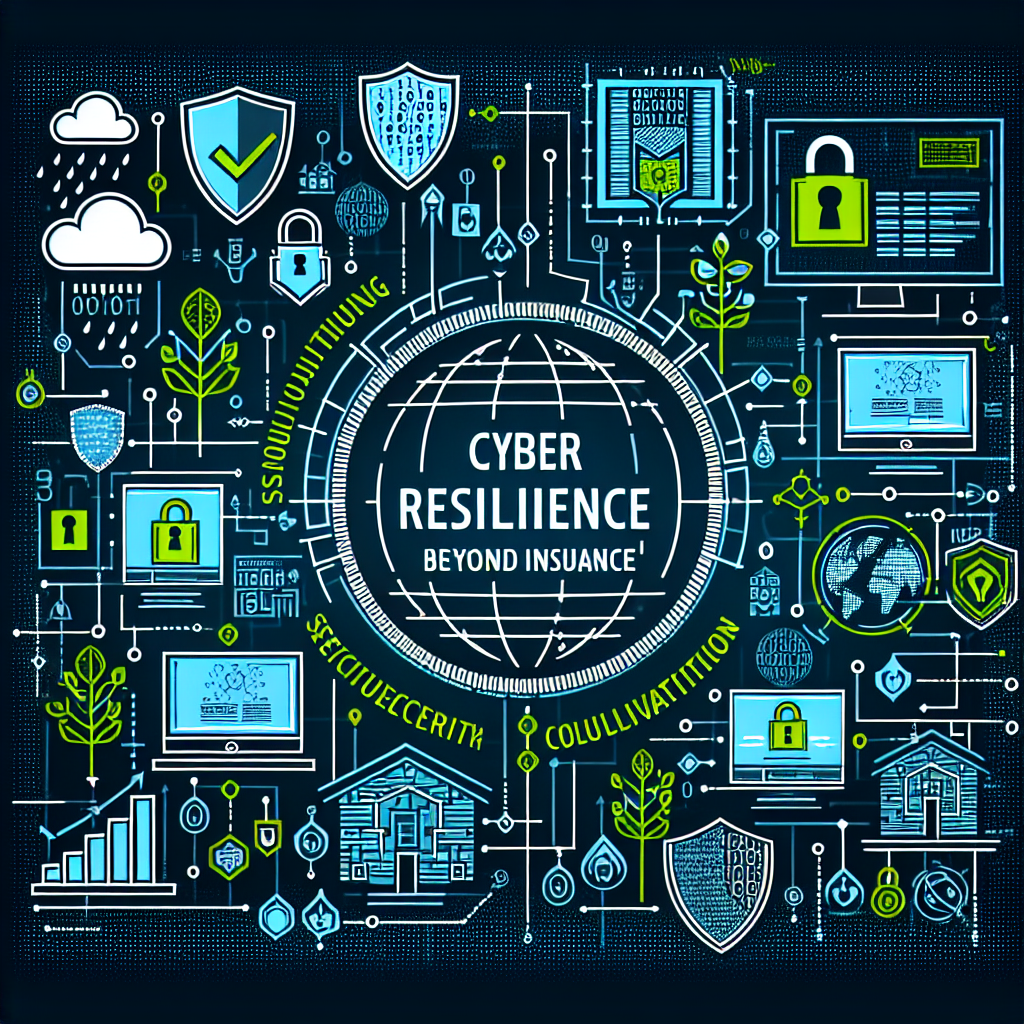As the Vice President of Engineering at Elpha Secure, Ratnesh Pandey plays a crucial role in shaping cybersecurity strategies and solutions that safeguard small and medium-sized enterprises (SMEs) from cyber threats.
Building on ideas presented in my previous article, I delve into the pressing challenges faced by the cyber insurance sector and propose solutions through adopting adaptive frameworks that enhance cyber resilience.
To bolster cyber resilience, the cyber insurance industry should focus on implementing structured cybersecurity frameworks that evaluate risk profiles and guide organizations in adopting effective security measures. These frameworks should incorporate a diverse range of controls to minimize exposure to threats, enhance resilience, and furnish insurers with a standardized approach to assessing policyholders. This comprehensive framework will assist in defining and managing “cyber catastrophic risk” by providing a holistic view of an organization’s risk profile.
Importance of Structured Cybersecurity Frameworks in Risk Management
For a risk management framework to be effective, it must be adaptable to the varying needs and risk profiles of different organizations, especially as cyber threats continue to evolve. Recommendations from authoritative bodies like the Cybersecurity and Infrastructure Security Agency (CISA) and the National Institute of Standards and Technology (NIST) underline the necessity of proactive and layered security strategies that cater to an organization’s specific risk landscape.
CISA’s Cybersecurity Performance Goals (CPGs) highlight essential, prioritized measures organizations can adopt to enhance their defenses. These measures include securing data backups, implementing multifactor authentication (MFA), and establishing ongoing vulnerability management practices. This involves accurately assessing exposure to common vulnerabilities and environmental risks, such as those associated with VPNs and firewalls.
NIST’s Cybersecurity Framework (CSF) further complements these recommendations by offering a flexible framework for risk management. It emphasizes leveraging advanced technologies, such as endpoint detection and response (EDR), particularly in decentralized work environments that are increasingly reliant on cloud services. NIST advocates for employing zero-trust architecture and identity-based access control as cornerstone methodologies for mitigating risks in multifaceted cloud environments.
Balancing Inside-Out and Outside-In Controls
The cyber insurance industry has traditionally concentrated on outside-in controls, which often involve external scanning of cloud assets or dark web monitoring to detect potential breaches. While these methods provide valuable insights, they fall short in offering a complete perspective on an organization’s cybersecurity posture. Effective cyber insurance strategies should integrate both inside-out and outside-in controls, allowing for a comprehensive assessment of risk similar to how threat actors approach potential targets.
Inside-Out Controls
Endpoint Detection and Response (EDR) and Incident Response Planning: Establishing a well-defined incident response plan alongside EDR mechanisms ensures a systematic methodology for containing and recovering from cyberattacks.
Privileged Access Management (PAM) and Multifactor Authentication (MFA): By restricting access to sensitive information and implementing additional verification steps, organizations can significantly minimize the risk associated with compromised credentials.
Managing Nonhuman Identities: As businesses increasingly adopt cloud services, the management of application identities and service accounts becomes crucial. Inadequate tracking can make these identities vulnerable to attacks.
Ensuring Backup Integrity: Consistently tested, secured, and encrypted backups are essential for maintaining business continuity during cyber incidents.
Email Security: Emails are a primary entry point for cybercriminals, with business email compromise (BEC) claims accounting for substantial losses. For instance, the FBI’s IC3 report indicated that BEC claims led to $2.9 billion in adjusted losses in 2023.
Vulnerability Management: Conducting regular scans of systems and applications assists organizations in identifying and prioritizing vulnerabilities. Timely patching of these vulnerabilities reduces the risk of exploitation, creating a more secure operating environment, particularly for small and medium-sized enterprises (SMEs) that face numerous latent vulnerabilities.
Outside-In Controls
External Scanning and Threat Intelligence: Monitoring the external threat landscape through intelligence-gathering enables organizations to adopt proactive measures against emerging vulnerabilities, which may include cloud exposure or poor configurations. The identification and resolution of critical vulnerabilities, such as Palo Alto Networks PAN-OS vulnerability CVE-2024-0012, can significantly diminish risk exposure.
Supply Chain Security: Given the rise in supply chain attacks targeting third-party vendors, assessing supply chain security practices is essential to protect sensitive organizational data and controls.
Utilizing Industry Benchmarks and Frameworks: Adopting structured benchmarks offers insurers a standardized method to evaluate the cybersecurity posture of their clients, enabling organizations to meet minimum cybersecurity standards and enhance their insurability.
Supporting SMEs with Managed Service Providers
The cyber insurance industry acknowledges that SMEs frequently lack the necessary resources and expertise to fulfill demanding cybersecurity requirements. Collaborating with managed service providers (MSPs) can help these organizations meet their security obligations. By partnering with MSPs, SMEs can deploy critical security measures such as EDR, incident response capabilities, and privileged access management without the need for extensive internal resources.
Conclusion
While there may not be a singular solution to address all challenges within the cyber insurance landscape, the industry can indeed improve its standards to mitigate cyber risks and enhance resilience among organizations. Utilizing structured frameworks provides valuable guidance on the effective application of security controls and managing supply chain vulnerabilities. They advocate for continuous monitoring and automation of responses to minimize the impact of cyber incidents.
Both inside-out and outside-in controls form the bedrock of an effective insurance framework that can reduce claims and support more precise risk evaluations. Additionally, cyber insurance providers can motivate SMEs to collaborate with trustworthy MSPs, benefitting both the insured entities and insurers. Adhering to these best practices can help organizations strengthen their defenses and foster a more consistent and transparent approach to securing cyber insurance.



